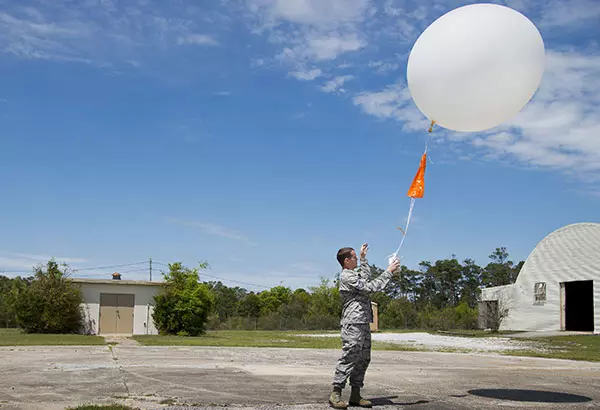Below are the key highlights from Cory Marino (KK7DCI)’s May 2025 presentation on radiosondes, as shared with the Klamath Basin Amateur Radio Association.
For more detailed information, you can view the full presentation here:
KBARA Radiosondes.pdf.
🛰️ What Is a Radiosonde?
A radiosonde is a small, expendable instrument package (weighing 60–80 grams) suspended below a large balloon inflated with hydrogen or helium gas. As it ascends at about 300 meters per minute, it transmits real-time data on pressure, temperature, humidity, and GPS position via a 300mW radio transmitter, typically operating between 400–405.9 MHz.
📍 Where and When Are They Launched?
- Launch Sites: National Weather Service offices (e.g., Medford, OR), military sites, and third-party observatories.
- Timing: Typically launched twice daily at 00Z and 12Z; some sites also launch at 06Z and 18Z.
- Special Launches: Occasional additional launches may occur weekly or during special events.
✅ Can We Keep Them?
Yes! According to the National Weather Service, there’s no need to return recovered radiosondes. They are considered expendable and are often discarded after use.
📡 Tracking Radiosondes
- Online: Use sondehub.org to view live maps of active radiosondes worldwide.
- Base Station Setup:
- Hardware: Single-board computer (e.g., Raspberry Pi), SDR dongle, antenna, and optional low-noise amplifier and SAW filter.
- Software: Install Docker and
radiosonde_auto_rxto decode signals.
- Example: A basic setup with a mag-mount antenna has successfully tracked over 700 sonde flights since February 2024.
🧭 Recovering Radiosondes
- Bare Minimum: Use a handheld transceiver (HT) tuned to the sonde’s frequency and a navigation app to approach the predicted landing site.
- Mobile Station: Enhance recovery with a mobile setup including a smartphone, SDR, GPS, and software like Chasemapper and
radiosonde_auto_rx. - Final Approach:
- Without Mobile Station: Listen for the sonde’s distinctive “squawking” noise and look for visual cues like an orange parachute.
- With Mobile Station: Use Chasemapper’s “Range Rings” feature to estimate distance and adjust your approach accordingly.
🔁 Reusing Radiosondes
- Reprogramming: Many radiosondes are based on STM32 microcontrollers and can be repurposed for other projects.
- Donations: Some organizations accept used radiosondes for educational or research purposes.
